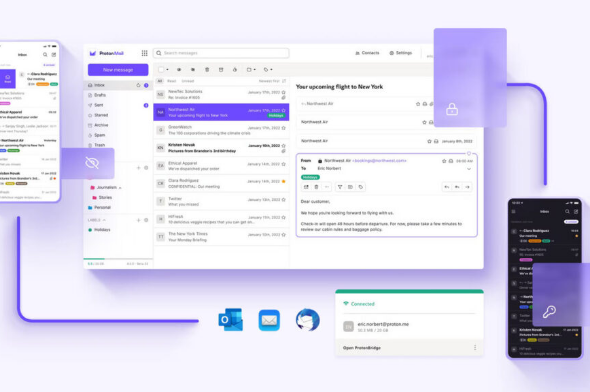Connection to DriversCloud Create a DriversCloud.com account Reset your DriversCloud.com password Account migration
50% of emails contain invisible trackers
The aim is to collect as much information as possible about your location or your habits.
Generally speaking, it is said that you should not click on any suspicious links in e-mails. In reality, caution would dictate that we go much further in our suspicion of e-mails. Since they no longer answer unknown phone numbers, some users have taken rather drastic measures by sending any message from a mysterious source directly to the trash. The method is not bad, but what to do when the source is known? This is the warning issued by the editor Proton - and relayed by Clubic - which commissioned a study on the presence not of viruses, but of "spy pixels" in e-mails exchanged around the world.
The findings are striking: the problem affects 50% of emails, i.e. more or less 166 billion emails in which these spy pixels can be found. First of all, the spy pixel is not a virus and it is not dangerous at first sight in the sense that it does not risk destroying your data or encrypting them so that the sender can then ask you for a ransom. No, the spyware pixel is a single pixel "image" that is transparent. In fact, it is absolutely invisible and can be detected almost exclusively by analyzing the email code.
Since it does not destroy any data or require you to pay Bitcoins, why worry about these spy pixels? Because they are nothing less than tracking tools: as soon as a user opens a web page or accesses an email, the spy pixel takes care of tracking your every move. It is thus able to locate your spatial location very quickly, but also to determine most of your habits on the Internet. It is therefore clearly a question of infringing on the privacy of Internet users with the sole objective of recovering a maximum amount of information about them in order, for example, to launch vast marketing campaigns.
However, the company Proton, which commissioned this study, did not do so out of charity. It actually publishes the Proton Mail software, which aims to counter the threat of these spy pixels. The idea is to offer an encrypted messaging system from the sending to the receiving of the email. In doing so, it thwarts the spy pixels and their technique of tracking Internet users. Its CEO, Andy Yen, explains that " Spy pixels are a very intrusive way for marketing companies to collect more and more personal information about users without their consent. [...] This type of surveillance is unacceptable, especially at the scale at which it is occurring, and when users are generally unaware of it. At Proton, our mission has always been to create a better internet where privacy is the rule. That's why, in addition to providing an end-to-end encrypted messaging service, we are also deploying enhanced protection against email trackers.
Of course, Proton has every right to chase spy pixels, security is its business. That said, it should be noted that e-mail threats have been on the rise for several years now and that, fortunately, other e-mail clients offer a protection system quite similar to that of Proton Mail. Nevertheless, you should check before choosing this or that software.





